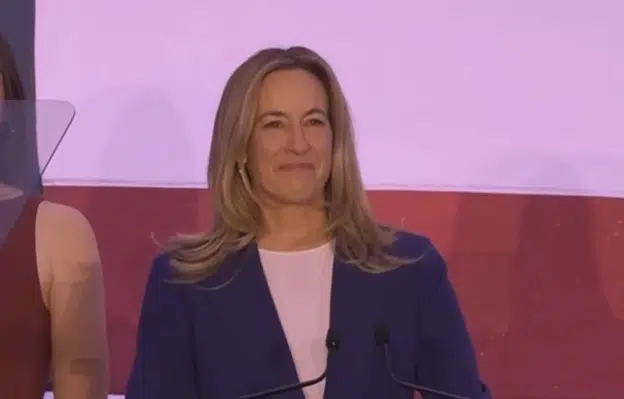By Michael Swartz –
 In the wake of the emotional ObamaCare debate, the President’s approval ratings sank much closer to those endured by the outgoing President Bush than the stratospheric heights polled as the era of Barack began. Looking at Rasmussen’s tracking poll, Obama reached a low of 43% approval during the weekend of the final House debate over the Senate-sponsored health care measure, and the approval index (defined by Rasmussen as the percentage strongly approving minus the percentage strongly disapproving) reached a low of -21.
In the wake of the emotional ObamaCare debate, the President’s approval ratings sank much closer to those endured by the outgoing President Bush than the stratospheric heights polled as the era of Barack began. Looking at Rasmussen’s tracking poll, Obama reached a low of 43% approval during the weekend of the final House debate over the Senate-sponsored health care measure, and the approval index (defined by Rasmussen as the percentage strongly approving minus the percentage strongly disapproving) reached a low of -21.
Since those low points, though, the emotion of the debate over health care has subsided and Obama’s approval ratings have began their own slow recovery – back to 48% approval earlier this month and a slightly healthier approval index of -10 earlier this month. That might be an encouraging trend for a party which just last month was left for dead in November, and perhaps shows that Republicans need to curb their enthusiasm about derailing the Obama agenda next year.
Yet one has to ask just what is different about the public’s mood now — the index has dropped again to -18. Certainly there’s still a Tea Party element out there flexing its muscle, but Obama has adroitly focused his efforts on the one area he can be seen as populist in advocating Wall Street reform. While there are a lot of people who dislike big government, even more have a beef with the perceived fat cats who navigate the murky waters of derivatives and other difficult-to-explain financial instruments while making handsome profits for themselves and sticking taxpayers with their losses.
Then again, it’s not easy to figure out what Congress wants to do with Wall Street either. In that respect President Obama seems to be leading in the same manner as he did with health care, standing aside while Congress debates the finer points and waiting anxiously with pen in hand for the final legislation to pass. Unlike health care, though, President Obama may be waiting in vain should Republicans flex their ability to filibuster legislation during conference — Democrats no longer have the convenient workaround they enjoyed in goosing the system and rules to pass ObamaCare.
On the other hand there are still a number of boobytraps remaining before Obama and the Democrats can survive the upcoming election with their majorities intact.
Immigration is the hotbutton issue du jour, placed there once Arizona passed a get-tough measure on illegal immigrants (which ironically is simply a rewrite of federal law at a state level.) While the President has wanted to see reform with federal law, there’s a number of Democrats who are quite squeamish about touching anything which remotely resembles amnesty. They’re mindful of the reaction back home, and for good reason.
The same goes for cap-and-trade legislation, which is a nonstarter despite the continuing Deepwater Horizon disaster in the Gulf. President Obama wasn’t able to take advantage of the situation by showing leadership; instead he’s being chastised by some in the press for his slow reaction to the crisis.
It could be, however, that the biggest difference between the more popular Obama of late and the Obama trying to get health care reform passed is that the President doesn’t seem to be the constant presence he was during that debate. With a number of other world crises taking place, such as the financial meltdown of Greece, the news isn’t quite as focused on the President and lack of familiarity stops breeding contempt.
There’s no doubt Americans aren’t necessarily buying what President Obama is selling, but the pitchman has retreated off the stage enough to keep his record out of the limelight and regain a little of his lost popularity in the process.
Michael Swartz, an architect and writer who lives in rural Maryland, is a Liberty Features Syndicated writer.






